Achars associated with meals can mainly be divided into three – achars to be followed before the meal, during the meal and after the meal. Traditionally in Hindu Dharma, food is served by others; but under the influence of western customs and a fast-paced lifestyle, this tradition is gradually diminishing. However, the method of others serving food still remains an appropriate method, complete from every perspective. Here we have described the achars associated with meals by focusing on this method of serving food.
1. Achars to be followed while eating
A. Eat with your right hand. Cultivate the habit of eating with the right hand in children too.
B. Use all the fingers while eating. As far as possible, avoid the use of spoons and forks.
C. Begin with dal and rice topped with ghee. In the beginning, eat heavy (to digest), oily, sweet, cool and hard items. In the mid of the meal, eat sour and salty items. At the end of the meal, eat pungent and bitter items.
D. Chew every morsel a minimum of 32 times.
E. Drink water intermittently.
- Drink water with the lips touching the glass.
- Drink water holding the glass in the left hand, supporting it from the bottom with the right palm facing downwards.
- Do not drink water holding the glass with the right hand (which is used for eating).
- Do not drink water with the neck facing upwards.
- Do not make a gulping sound while drinking water.
F. While having a meal, do not serve food to yourself with your left hand. Instead, ask someone to serve you. If that is not possible, pray and chant the Name (of God) and then serve yourself.
G. While having a meal, fill two parts of your stomach with food,one part with water and let one part be free for movement of gas.
H. Do not leave any food in the plate. Take atonement for such leftovers.
I. Recite ‘अन्नदातासुखीभव |’ (O provider of this food ! May you be happy !), offer gratitude unto the Holy feet of your Deity of worship and Shri Annapurṇadevi and only then get up from your seat.
2. Aspects to be taken care of while eating
A. Abide by these aspects while eating
- If possible, try to follow the customs of sovale and the associated permission to touch.
- As far as possible, avoid mixing the food items. Instead, enjoy the taste of every item while eating.
B. Avoid these aspects while eating
- Having leather items on the body (or while visiting a temple).
- Sitting with the support of the left hand.
- Allowing the food to touch the palm.
- Eating hurriedly. This adversely affects the digestion and appreciation of the taste of food. Also, avoid eating too slowly. Eat at a moderate pace.
- Making any sound while eating, drinking water and while performing achaman.
- Being in any stress or tension. Eat with a pleasant state of mind.
- Conversation, gossip and arguments.
- Talking on the mobile phone.
- Reading.
- Watching programs on television or discussing worldly matters.
- Ridiculing food. Food is a form of vital-energy, and only when it is eaten with respect, strength and glow get enhanced.
- Writing something in the plate.
- Getting up midway through the meal.
- Touching each other.
- Giving food served in your plate to others.
- Eating with another individual from the same plate.
- Looking at other’s plate.
- Do not eat food in which a body hair is found.
- Eating lying down or in broken ware or placing the food directly on the floor.
- Sitting idle or falling asleep with unwashed hands.
- Washing the hands in the same plate after eating.
- Getting up before all have finished eating; if you do so, take atonement.
- Eating while standing or while walking.
- Paying obeisance to an individual who is eating.
3. The rules associated
with having food and water
A. Generally speaking, drink water whenever you are thirsty. Do not drink water when hungry and do not eat when thirsty.
B. Drinking water before a meal dilutes the digestive juices and thereby reduces the digestive strength, food does not get appropriately digested and hunger is suppressed. This weakens the body. Drinking water after a meal increases the weight, leading to production of kapha (Phlegm) in greater proportion in the body. Therefore, sip water while eating food. This allows us to enjoy the taste of different food items and the body remains in shape too.
C. An obese individual should drink 1-2 glasses of water before meals. This will suppress the hunger and provide him a feeling of fullness. A skinny individual should drink water after the meal. A healthy individual should sip water while eating. In general,however, do not drink water immediately after the meal; drink it an hour after the meal.
D.Do not eat and drink at the same time. It dilutes the saliva created in the mouth and delays the digestion of food.
E. Sit in one place and develop the habit of drinking only a glassful of water at a time. After drinking water, expel air through the mouth.
4. Precautions to be taken about food and water
A. When food is taken down from the gas stove, make a mandal of sattvik(Sattva-predominant) Name-strips of Deities around the food bowls as well as the water to create a protective sheath around them. In addition, pray for the creation of a protective sheath.
B. While eating food and drinking water, pray to the Deity of worship – ‘Let all distressing energy stored in the food and water be destroyed and let my body get the essential nutrients’.
C. Performing nyas on the Maṇipur-chakra & Anahat-chakra for destroying the distressing energy in the body.
D. Distressing energy stored in blood burns the hemoglobin;hence, eat food that is rich in hemoglobin.
E. Pray to the presiding Deity of the body for obtaining Chaitanya(Divine consciousness) and nutrients.
5. Acts to be performed after a meal
A. To avoid trampling on food particles spilled from the plate after the meal, collect them in the plate or bowl.
B. Rinse the mouth thrice.
C. Wash the mouth and brush the teeth.
D. Gargle with water a minimum of 3 times and maximum of 21 times. If gargling more than 3 times, let it be in multiples of 3(meaning 6, 9 etc.).
E. Wash your feet.
F. Perform achaman as elucidated ahead. If this is not possible, perform the achars mentioned after that.
- Take a kalash (A metal vessel) filled with water, panchapatri, small spoon and a tamhan to pour water.
- Pour some water from the kalash into the panchapatri.
- With the help of the spoon held in the left hand, take a little water from panchapatri onto the right palm and sip it while reciting ‘ॐश्रीकेशवायनम: |’(Om Shri Keshavaya Namaha). Once again, take water on the right palm and sip it while reciting ‘ॐनारायणायनम: |’ (Om Narayaṇaya Namaha). Repeat the step; this time recite ‘ॐमाधवायनम’ (Om Madhavaya Namaha) while sipping the water. Finally, take water on the right palm and while reciting ‘ॐगोविंदायनम: |’ (Om Govindaya Namaha), release the water in the tamhaṇ.
G. Eat a betel leaf or fennel to freshen the mouth. Before eating a betel leaf, do not forget to remove the stem, tip and veins of the betel leaf. Do not swallow the juice that comes out from it during the first and second chewing. Swallow the juices that come out from the subsequent chewing.
6. Acts to be performed for better digestion
A. After the meal, move your hand over the stomach and recite any one of the following verses.
अगस्त्यंकुम्भकर्णंचशनिंचवडवानलम् |
आहारपरिपाकार्थंस्मरेद्भीमंचपञ्चमम् ||
Meaning : Always remember Sage Agastya, Kumbhakarna (Brother of Demon King Ravan), Shani (Planet Saturn), Vadvagni (Forest fire) and Bheem (Second Pandav) for good digestion of food.
अडगारकमगस्तिंचपावकंसूर्यमश्विनौ |
यश्चैतान्संस्मरेन्नित्यंभुक्तंतस्याशुजीर्यते ||
Meaning : He who remembers planet Mars, Sage Agastya, Agni(Deity of Fire), Deity Sun and Ashwinikumar (Physician of Deities)is able to digest food faster.
B. Sit in vajrasan (A sitting posture) for five to ten minutes. This is the only sitting posture that can be performed after a meal.
C. Walking a hundred steps slowly.
D.If quick digestion of food is desired, lie down in a supine position and breathe 8 times, then lie down on the right side and breathe 16 times, followed by lying down on the left side &breathe 32 times. Breathe slowly and deeply. Slow and deep breathing increases life-span, while quick and shallow breathing reduces life-span.
E. Vamakukshi :Vamakukshi means resting on your left side for 24 minutes. It is performed after the noon meal.
F. There should be a gap of minimum 1-2 hours between dinner and sleep.
7. Avoid this after a meal
A. Do not leave the leftovers in the used bowls overnight. Place them on a banana leaf outside the house for the cattle to eat, or offer it to some inferior Deities like Asara.
B. Do not have a hair-cut after a meal.
C. Do not bathe after a meal.
D. Do not exercise after a meal.

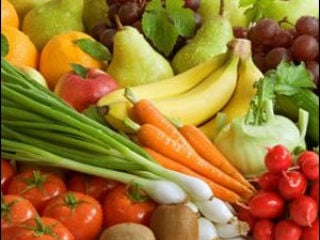 For healthy living avoid food that can cause antagonism due to contra-indications
For healthy living avoid food that can cause antagonism due to contra-indications Ill effects of artificial cold drinks
Ill effects of artificial cold drinks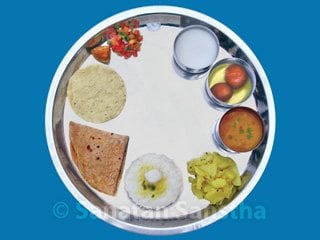 The connection between food and disease, important analysis on digestion
The connection between food and disease, important analysis on digestion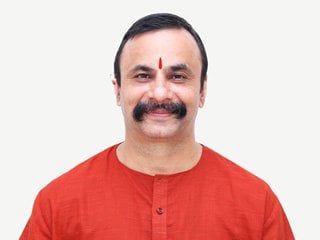 The method of preparing rice is important !
The method of preparing rice is important !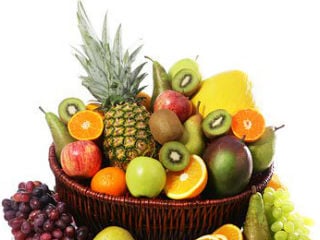 Give up junk food and embrace Ayurveda
Give up junk food and embrace Ayurveda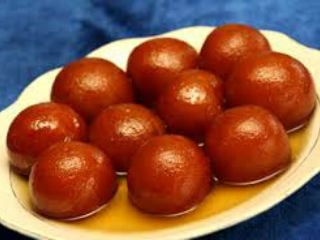 Should sweets be eaten at the beginning or end of a meal ?
Should sweets be eaten at the beginning or end of a meal ?